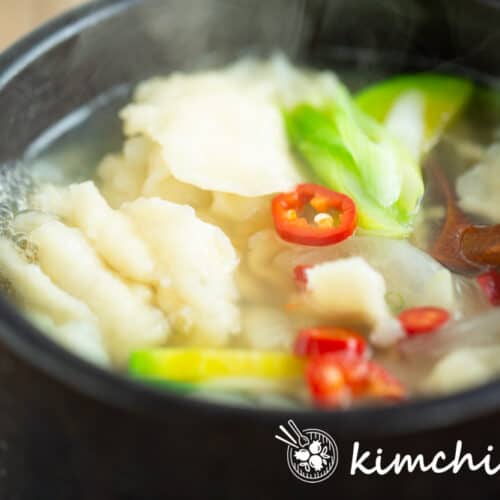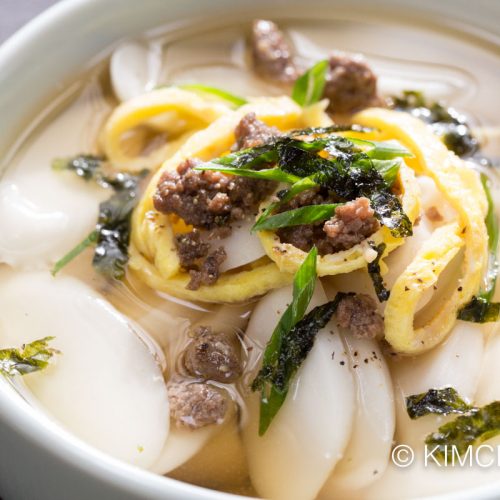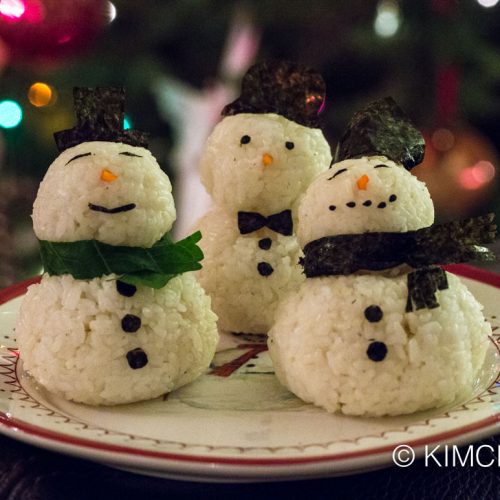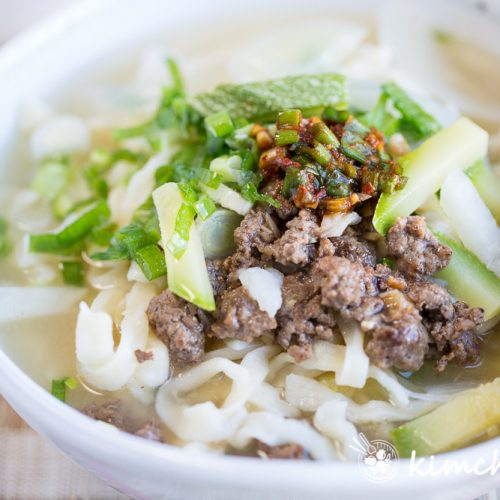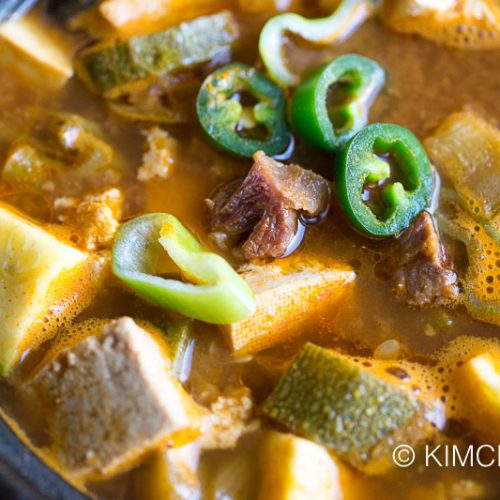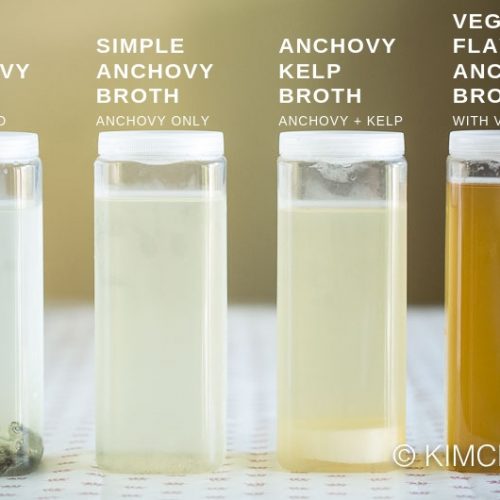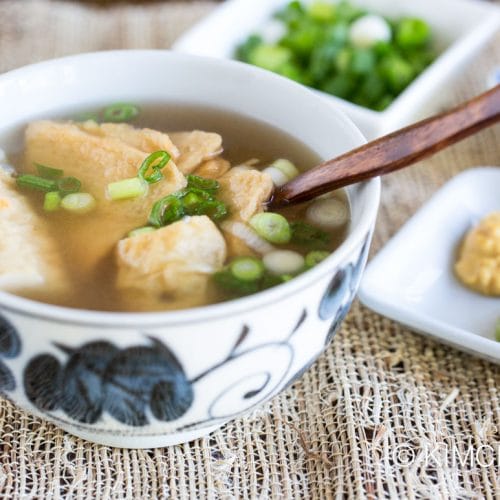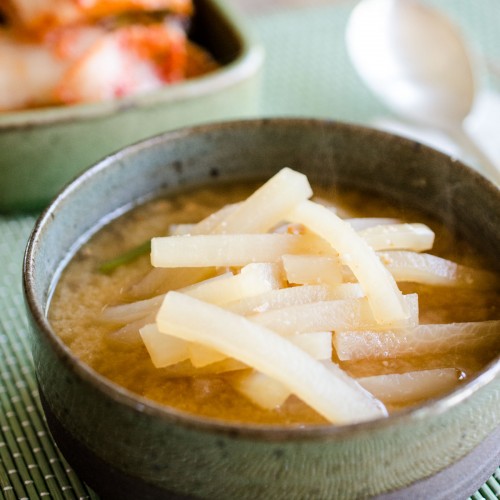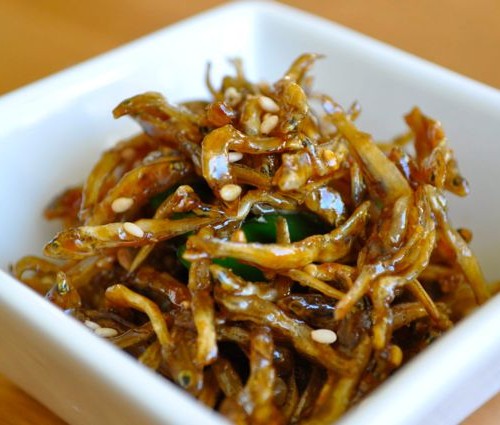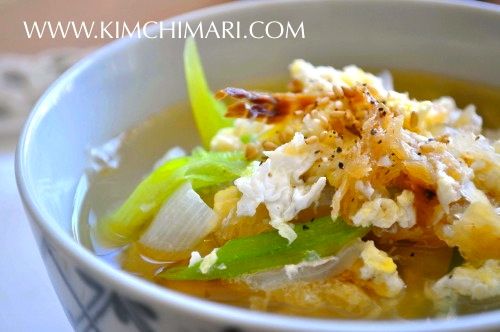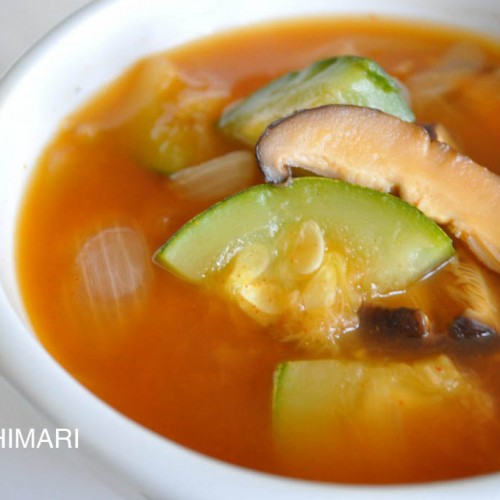What are Dried Anchovies (Myeolchi) ?
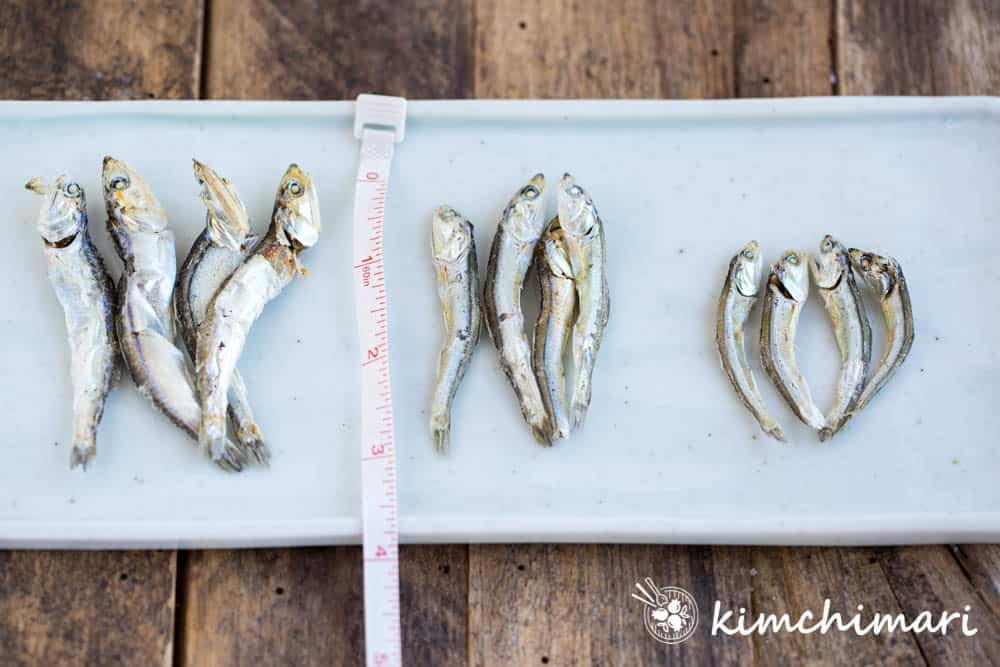
Anchovies are small fish that are used as fishing bait but also used as food in many different cultures. There are many species but the one used in Korean cooking is Engraulis Japonicus (Japanese Anchovy).
Koreans either salt the anchovies and ferment them to make Anchovy Fish Sauce (Myeolchi Aekjeot) or steam and then dry them to make Mareun Myeolchi (Dried Anchovies).
Dried anchovies are used in a variety of ways in Korean food (read below for more info).
Commercially, they are categorized as follows - based on their lengths :
- 세멸 (saemyeol) - usually less than 2 cm (0.8 inch)
- 자멸 (jamyeol) - 1.5 cm to 4 cm (0.6 to 1.57 inch)
- 소멸 (somyeol) - 3.5 to 5 cm (1.37 to 1.96 inch)
- 중멸 (jungmyeol) - 5 to 7.7 cm (2 to 3 inch)
- 대멸 (daemyeol) - larger than 7.7 cm (3 inch or larger)
But in reality, most myeolchis are sold either for making Bokkeum (sauteed) or for broth. So they are usually referred to as follows:
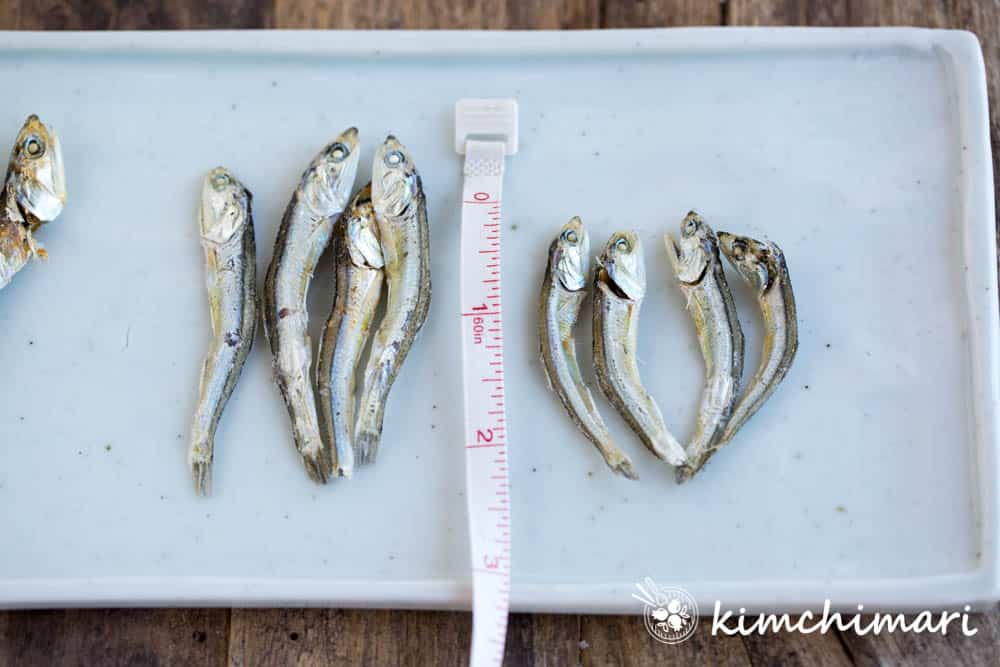
- 잔멸치 (Jan Myeolchi) or 볶음용 (Bokkeum Yong Myeolchi) 멸치 - these are smaller dried anchovies that are used mostly for making sauteed anchovies (Myeolchi bokkeum). They range from the smallest around 1 inch to about 2 inches long. Right most myeolchi in picture above.
- 국물용 멸치 (Gukmulyong Myeolchi) - these are bigger dried anchovies that are used mostly for making Anchovy broth. They are usually 2 inches or longer. See picture above - the left and center ones are big enough for broth making.
- Note, the 2 inch long anchovies are kind of in-between and they can be used for both broth and bokkeum.
Not To Be Confused With
canned or fresh anchovies or anchovy sauce
Where and What To Buy
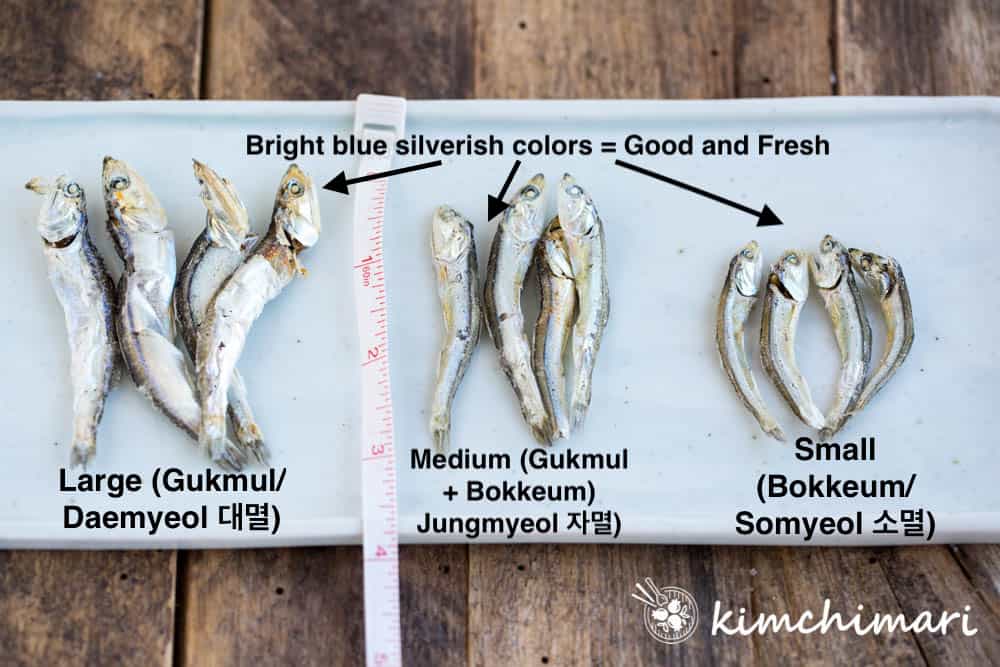
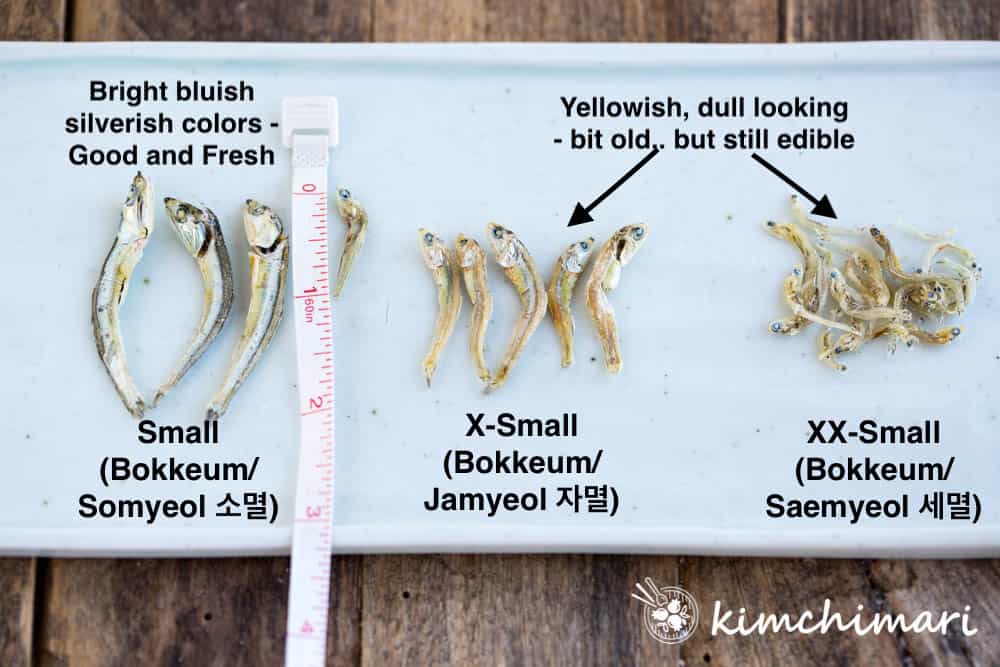
Korean or Asian grocery stores. Some specialty grocery stores may carry dried anchovies as well. The various sizes are separated and packaged, usually in a box or plastic bag and often sold refrigerated or on shelves.
How to pick a good quality, Korean dried anchovy?
Taste it. That's the best way - they should taste good as it is. Some will be too salty and unpleasant to eat. In Korea, you can buy very fresh ones that are still a bit soft and not too dry.
Also, look for bright blue silverish colors instead of dull yellowish looking ones. In the pictures, I show you how different they look. The yellowish smaller ones have been in my fridge for over a year so they look like that. They are still good to eat but just not at their best.
Outside of Korea, unfortunately, you may not be able to buy the very fresh looking soft Myeolchi. Most will be quite dry, hard and brittle and yellowish... but they should still be OK to cook with unless for bokkeum, you may want to add back some moisture by adding a bit of water while sauteeing.
What brand is best for Myeolchi?
Well, I don't think there's any particular brand to look for as different stores carry very different kinds. I think Sempio is one that I see regularly and they should be OK as long as it's not too old.
NOTE - the different names I have for the myeolchi above such as Daemyeol, Somyeol.. are a wholesaler's term and commonly it's not used so don't ask people using these terms. I am just sharing it here so I can categorize them but normally, you just ask for Bokkeum-yong vs Gukmul-yong Myeolchi.
How to Use/Cook
Anchovy Stock/Broth - Larger dried anchovies (2 inch or larger) are best for making Anchovy stock. The ones larger than 2 inches should definitely be gutted but 2 inch or smaller ones can be used whole.
Anchovy Bokkeum - Smaller anchovies (2 inch or smaller) are prepared as a side dish by toasted and seasoning them. The medium sized ones should be gutted and head removed for Bokkeum. The x-small and xx-small ones can be sauteed whole.
Anju - The larger to medium-sized anchovies can be eaten with some gochujang with Soju or Makgeolli as Anju (food that goes with liquor).
How to Clean/Store
Dried anchovies have a long shelf life but should be kept refrigerated or ideally, frozen to keep from molding or spoiling.
Even if you keep it refrigerated, the colors will become dull and yellow after about a year so it is best to consume them before they change color. As long as the anchovies don't have mold on them, they can still be used in cooking even if they have turned a little yellow or seem too dried up.
Nutrition/Health Info
- Myeolchi is high in calcium due to the fact that we eat them whole with all the bones in them. So Koreans encourage little children to eat a lot of Myeolchi for strong bone development.
- Myeolchi is also low fat and high in protein.
